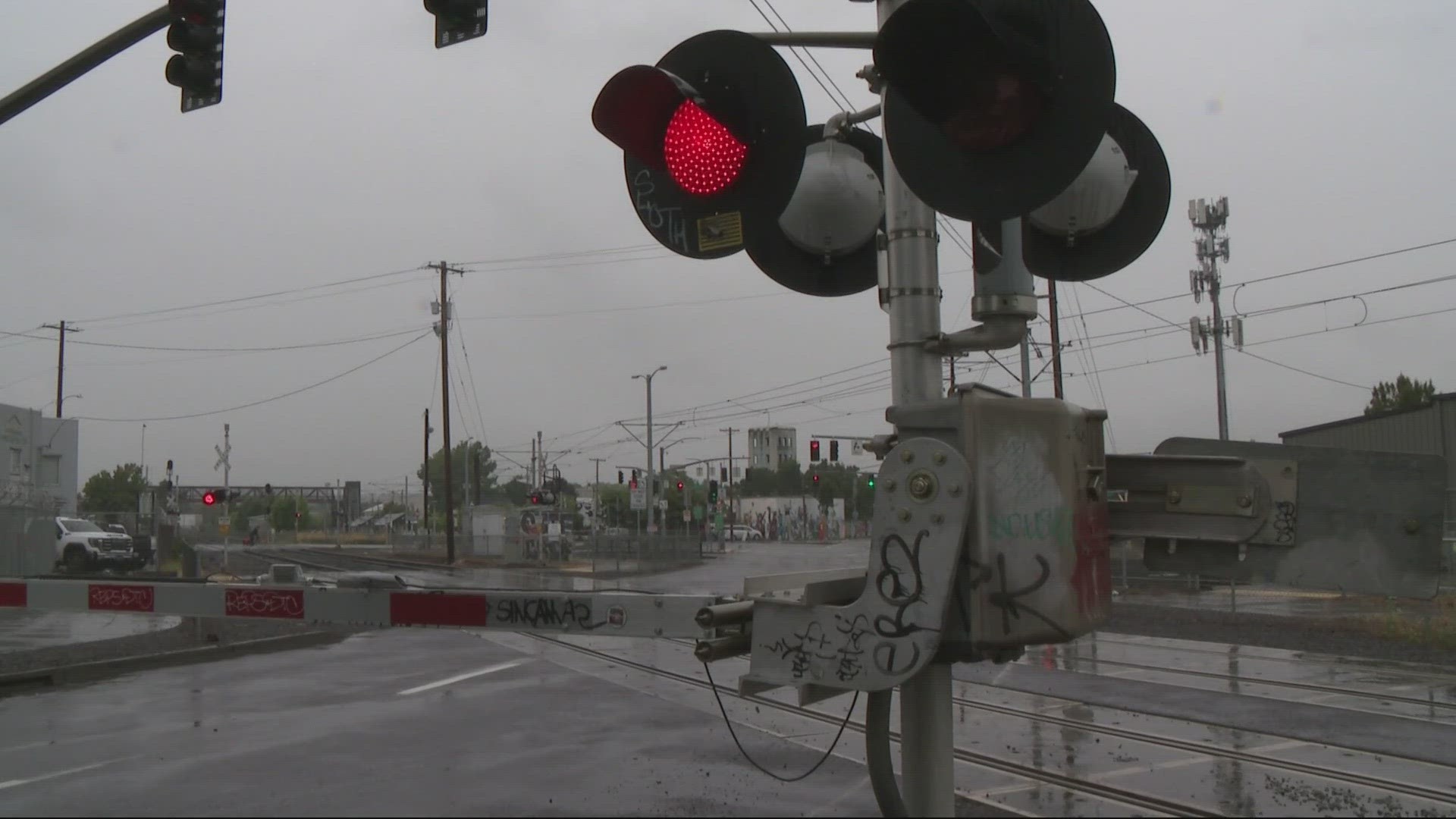PORTLAND, Oregon —
If you’ve spent any time driving around parts of Southeast Portland, you know there’s one thing that can quickly derail your plans: stalled trains, seemingly just parked across the road.
At some of the area's railroad crossings — most infamously Milwaukie and 12th Avenues, plus the nearby 8th Avenue — extended wait times of up to an hour or longer have long been a simmering frustration for drivers, pedestrians and other street users.
But help could be on the way — eventually.
On Thursday, U.S. Congresswoman Suzanne Bonamici, who represents part of Southeast Portland, along with City Commissioner Mingus Mapps, announced a $500,000 grant from the Federal Railroad Administration to look for solutions to the issue.
Bonamici said she’s found herself trapped at a train crossing before and that in addition to the everyday frustration, the frequent jam-ups can create real challenges for people.
“If someone is trying to get to doctor’s appointment or a meeting, it can be incredibly frustrating and challenging and, frankly, not safe for people to be trying to find a way to get around the train,” she said.
Mapps, who lives in the nearby Buckman neighborhood, said he often needs to drop his kids off for camp on the south side of the tracks in time to catch a bus. Getting stuck at a crossing can mean the difference between a fun day at camp for the kids and a “bring your kids to work day,” he said.
The extended wait times can also encourage troubling behavior from the people who get stuck, he added.
“It is incredibly common when a train is stuck on that track to see pedestrians and bike riders literally crawl up and over the train,” Mapps said. “That is incredibly dangerous. It’s not how we want to organize this city, and I know we can do better.”
Part of the problem comes from the length of trains that travel through Portland. The railyard in the Brooklyn neighborhood is less than a mile down the track from Milwaukie and 12th Avenues and has capacity to load trains that are around 4,300 feet long — but the standard train length in the region is nearly 15,000 feet.
That means that train cars need to be rolled out of the yard in sections before they can be attached, and the result is trains blocking intersections, essentially parked on city streets, as drivers, pedestrians and bicyclists wait for them to move.
Unfortunately, anyone hoping for a quick fix to the problem might want to take a lesson from a trapped driver at a train crossing and exercise some patience. The 18-month study is expected to get underway in December, so any resulting recommendations likely won’t be ready until mid-2025.

